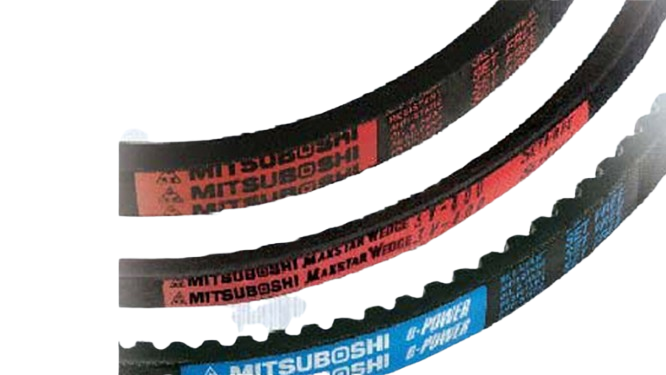V & T BELT

V & T BELT
V belts use friction for power transmission with a wedge-shaped cross-section, while timing belts use teeth for precise, synchronous movement by meshing with gear-like pulleys, preventing slippage. V-belts are suitable for simpler applications where some slippage is acceptable, offering lower cost and quiet operation, whereas timing belts are essential for high-precision applications like automotive engines, where synchronized rotation is critical.
For any service and support please contact us
- Design:
Has a V-shaped cross-section that wedges into grooved pulleys, increasing traction and power transfer.
- Application:
Used in situations where friction-based power transmission is needed, such as in automotive accessories (alternator, water pump), washing machines, and bench drills.
- Maintenance:
May require periodic re-tensioning as the belt wears and stretches over time.
- Characteristics:
Generally operates quietly and is a more economical solution for many applications.
- Design:
Features a continuous series of teeth along its inner surface that engage with corresponding grooves on the pulleys, ensuring positive drive.
- Application:
Critical for applications demanding precise, synchronous movement, like the crankshaft and camshaft in internal combustion engines, and in CNC machinery and robotics.
- Maintenance:
Requires less frequent re-tensioning than V-belts due to its design, which resists slippage.
- Characteristics:
Achieves high transmission efficiency (up to 98%) and provides accurate positioning.
- Transmission Mechanism:
V-belts rely on friction for power, while timing belts rely on positive meshing of teeth.
- Slippage:
V-belts can experience some slippage, whereas timing belts are designed to prevent it entirely.
- Precision:Timing belts offer precise, synchronized movement, making them essential for high-precision operations.